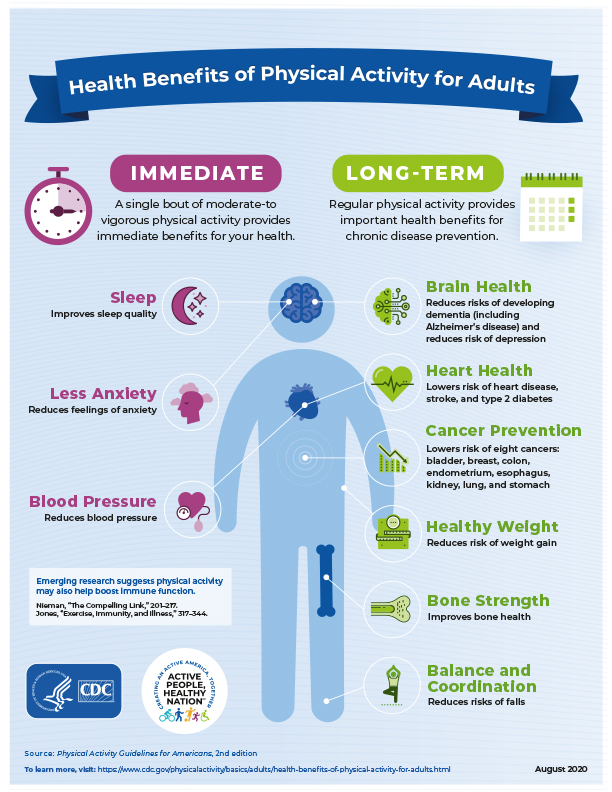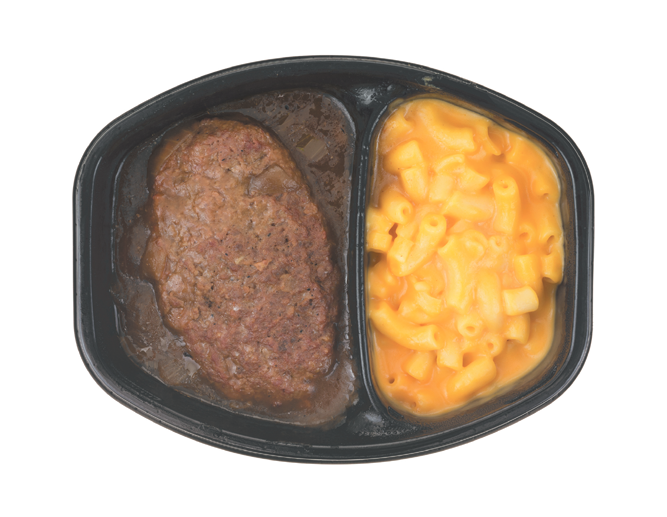
Regular physical activity can not only improve your health but also have many benefits for the community. It is well-known that exercise has psychological and physiological health benefits. You can also overcome social anxiety by having a positive outlook and a healthy self-esteem. Positive mental states can improve your ability to build new relationships or strengthen existing ones. These are just a few of the reasons you should be active. Here are some of the most important reasons why you should do it
Regular exercise can lower your risk for developing heart disease. Regular exercise is linked to a lower chance of developing heart disease. You also have lower blood pressure, better blood cholesterol profiles, and more energy. Physical activity is good for all ages and ethnicities. It is also good for the overall well-being of your body. Exercise can help prevent depression. If you have depression, you should do exercise to reduce your stress levels.

Regular exercise has numerous benefits. You can be healthier and more alert. Exercise releases endorphins, which can improve concentration and mental sharpness. Exercise also stimulates brain growth and can protect against the effects associated with aging. Being active regularly can increase your self-confidence. You will feel more confident, accomplished, and powerful.
Physical activity can boost your confidence. You can feel calmer and less stressed by doing it. Studies show that a high level of physical activity reduces your risk of heart disease. Research shows that this is true across all ages. It's even beneficial to people with disabilities. These benefits are open to all and they are not dependent on body weight. The risks of injury or sudden heart attacks are far more important than the benefits of exercise.
In addition to improving your physical health, regular physical activity can improve your mental state. Researchers have found that those who engage in physical activity are 1.5 days less likely to experience poor mental health. It is because exercise releases positive chemicals that interact with brain receptors. They lower stress levels and make us feel better. You can feel happier. Physical activity also has other benefits.

Exercise is a great way for new friends to be made. You can make new friends by joining a club or participating in a sport together. Physical activity not only improves your health but also allows you to meet new people. The endorphin rush from exercise will encourage you to connect with others. Exercise can improve your overall health and self-esteem. Regular exercise makes you feel happier and more confident.
FAQ
What kind of food should I avoid when trying to lose weight?
Avoid trans fats. Trans fats raise LDL (the bad) cholesterol levels and reduce HDL (the good) cholesterol levels.
Trans fats are commonly found in fast food, deep-fried and packaged baked goods as well snack cakes and other processed foods.
These unhealthy fats are also known to cause inflammation and lead to heart disease as well as diabetes.
Avoid eating foods that contain artificial sweeteners. Artificial sweeteners have been linked to an increase in cancer risk.
These chemicals are used in everything from soft drinks to chewing gum to candy bars. They are also found in poultry, eggs, meat and fish.
Artificial sweeteners are saccharin (cyclamate), sorbitol and aspartame.
The American Heart Association recommends avoiding these chemicals because they may damage DNA in cells.
What Is The Best Workout For Men Over 40?
For older men, the best workout usually gives them more energy and improves their stamina.
It is important to remember that most people over 40 experience a decline in testosterone, leading to lower sex drive.
You can still exercise, however. Many studies show that regular aerobic exercise can boost testosterone in some men.
You can improve your sexual performance by starting an aerobics program.
Do I need to exercise every morning?
No! Do at least 30 minutes of moderate intensity physical activity five days a week. That means walking fast enough to be slightly out of breath or biking hard enough to sweat.
Is it true?
Protein is important for maintaining healthy bones and tissue. But consuming too much protein can lead to calcium excretion through urine. This can cause kidney stones.
It is important to remember that not all people get kidney stones from eating more than 2g protein per kilogram (2.2lbs) of body weight. High amounts of protein can be consumed by some people without causing kidney stones.
Your sodium intake can prevent kidney stone formation. Sodium regulates the water balance of the kidneys. A high level of sodium can increase the risk of developing kidney stone.
You can also reduce your intake of proteins if you develop kidney stones. About half of adults' daily caloric intake is made up of protein. A reduction in protein intake will likely result in weight loss.
If you do decide to eat more protein, don't go overboard. Limit your intake to 20% of your total daily protein intake.
What if I exercise and drink alcohol?
Yes. Alcohol increases energy expenditure, speeds up recovery times, and reduces soreness.
Alcohol also increases insulin sensitivity, making it easier to absorb glucose.
Dehydration can result from alcohol, which can affect your metabolism. You may also experience a reduction in testosterone production which can lead to decreased muscle-building potential.
Women shouldn't consume alcohol before exercising. Women who have consumed a lot of alcohol should wait at most 24 hours before working out.
The best thing for women who are pregnant is to avoid alcohol.
Men should have no more than one drink per day.
Statistics
- Candidates and applicants must pass all four tests at 70% (minimum level) to graduate from Basic Deputy U.S. Marshal (BDUSM) Training. (usmarshals.gov)
- Get free shipping and 25% off today. (healthline.com)
- 10 pounds in a month is likely during a lean bulking phase, especially for beginners. (muscleandstrength.com)
- The PRS enabled risk stratification for overall prostate cancer and lethal disease with a four-fold difference between men in the highest and lowest quartiles (HR, 4.32; 95% confidence interval [CI], 3.16-5.89). (pubmed.ncbi.nlm.nih.gov)
- According to the American Academy of Dermatology (AAD), men over 50 are at a heightened risk of developing it. (healthline.com)
External Links
How To
How can a man get fit in 30 days?
Breaking down your fitness goals into smaller, more manageable steps is the best way for you to reach your fitness goals.
Every day, you must work towards your goal. This could include anything from 10 pushups that last 5 minutes to running 3km.
Consistently doing this will lead to positive results.
Be consistent is key. Keep at it until success!
What is the difference between Aerobic Fitness and Anaerobic Fitness?
Anaerobic fitness describes the body's ability not to use oxygen to perform intense physical tasks. Anaerobic pathways are used when there is intense exercise to provide sufficient energy. Anaerobic pathways can include glycolysis, creatinephosphate, the Phosphagen, and lactic acids.
Aerobic fitness, on the other hand, is a sustained low-intensity exercise. While performing aerobic exercises, oxygen is used as the primary source of fuel for the cells. In other terms, the aerobic pathway has more energy that the anaerobic.
For example, if you want to run a marathon, you must first build up your aerobic capacity. If you only focus on building up your anaerobic capacity, you won't be able to finish the race.
Aerobic fitness may also be known as cardiovascular fitness. The most common methods of determining cardiovascular fitness are step tests and VO2max testing.
Tests for VO2 Max
The body's maximum oxygen consumption during exercise is called the VO2 Max. This test measures the amount of O2 the body can utilize while exercising.
This test measures cardiovascular fitness in a way that is most accurate. However, the test can only be administered by highly trained professionals and requires expensive equipment.
Step Tests
Step tests can be used to assess cardiovascular fitness. They are easy and effective. You will be asked to walk, jog or run for a specific time on a track. This is based on your age or weight.
These tests are simple to perform, cost-effective, and easily accessible from almost any location. You can, for example, walk for 2 minutes on a treadmill, then rest for 1 min, then repeat the process for 20 minutes. Then, stop. Throughout the session, your heart rate should be within a certain range.
This method is known as the "Bruce Protocol". Bruce, a runner, developed this protocol after realizing that his heart rate did not rise when he ran longer distances.